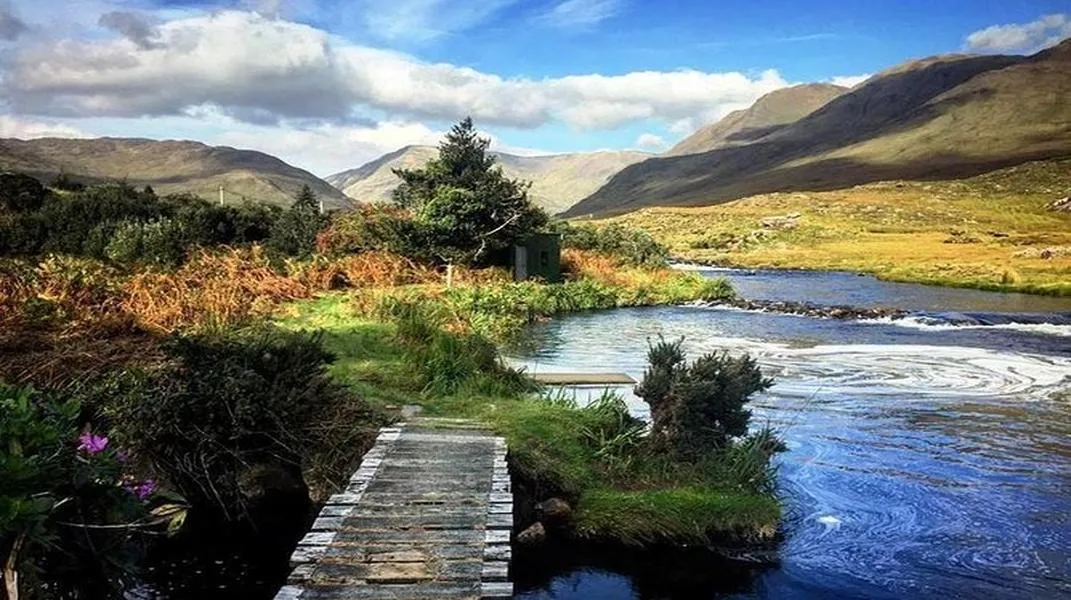Exploring the Great Smoky Mountains National Park: A Comprehensive Guide for Tourists
Nestled on the border between North Carolina and Tennessee, the Great Smoky Mountains National Park is a haven of natural beauty, rich biodiversity, and cultural heritage. This national park, established in

Introduction
Nestled on the border between North Carolina and Tennessee, the Great Smoky Mountains National Park is a haven of natural beauty, rich biodiversity, and cultural heritage. This national park, established in 1934, spans over 800 square miles and is the most visited national park in the United States, attracting millions of visitors each year. With its rolling mountain ranges, lush forests, cascading waterfalls, and a plethora of wildlife, the park offers an array of outdoor activities, scenic views, and cultural experiences. For anyone planning a visit, understanding what the park has to offer and how to prepare for the adventure is essential.
A Natural Wonderland
Scenic Beauty
The Great Smoky Mountains are renowned for their stunning landscapes, characterized by mist-covered peaks, verdant valleys, and diverse ecosystems. The park's elevation ranges from about 875 to 6,643 feet, with Clingmans Dome being the highest point. The varying altitudes create distinct climatic zones that support a wide variety of flora and fauna.
Visitors can experience breathtaking vistas from numerous overlooks, such as Newfound Gap and Cades Cove, where panoramic views of the mountains and valleys can be enjoyed. The fall season, in particular, draws many tourists due to the spectacular display of autumn colors, painting the mountains in hues of orange, gold, and crimson.
Biodiversity
The Great Smoky Mountains boast an impressive array of biodiversity, making it one of the most important protected areas in the United States. The park is home to over 19,000 documented species of living organisms, with estimates suggesting that tens of thousands more remain undiscovered. This rich biodiversity includes more than 1,500 flowering plant species, 200 species of birds, and 60 species of mammals, including black bears, elk, and white-tailed deer.
The park's diverse ecosystems range from lowland forests to alpine tundra, providing habitats for various wildlife. The presence of old-growth forests, characterized by trees that are over 100 years old, adds to the ecological significance of the park. Wildlife enthusiasts can take advantage of opportunities to spot animals in their natural habitats, particularly during dawn and dusk when they are most active.
Activities and Attractions
The Great Smoky Mountains National Park offers a plethora of activities for visitors of all ages and interests. Whether you are an avid hiker, a history buff, or simply looking to enjoy the great outdoors, there is something for everyone.
Hiking
With over 800 miles of trails, the park is a hiker’s paradise. From easy walks to challenging backcountry routes, there are trails suitable for every skill level. Some popular hiking trails include:
- Alum Cave Trail: This moderate hike leads to the summit of Mount LeConte, offering stunning views and interesting geological features along the way. The trail is approximately 5 miles one way and is well-marked.
- Clingmans Dome Trail: A short but steep hike to the highest point in the park, Clingmans Dome offers breathtaking views and a unique observation tower at the summit.
- Cades Cove Loop Trail: This 11-mile scenic loop is not only a great spot for wildlife viewing, but it also features historical structures, including old cabins and churches that tell the story of the early settlers.
- Appalachian Trail: Running through the park, this famous trail offers a unique opportunity to hike a section of the 2,200-mile trail that stretches from Georgia to Maine.
Wildlife Viewing
The park's diverse ecosystems and abundant wildlife make it an excellent destination for wildlife viewing. Cades Cove and the Cataloochee Valley are particularly popular spots for spotting black bears, deer, wild turkey, and even elk. Early mornings and late afternoons are the best times to see wildlife, and visitors should maintain a safe distance and never feed the animals.
Historical and Cultural Sites
The Great Smoky Mountains National Park is rich in history and culture, with many preserved structures and sites that reflect the lives of the early settlers. Some notable sites include:
- Cades Cove: This picturesque valley is home to several historic buildings, including cabins, churches, and a working mill, which illustrate the lives of the early Appalachian settlers.
- Mingus Mill: Located near the Oconaluftee Visitor Center, this historic gristmill, built in the 1880s, offers visitors a glimpse into the past and the opportunity to see the mill in action.
- Elkmont Historic District: Once a bustling resort area in the early 1900s, Elkmont features a collection of historic cabins and structures that reflect the park's development as a tourist destination.
Camping and Picnicking
For those looking to immerse themselves in nature, camping is a popular option in the park. With ten campgrounds scattered throughout the area, visitors can choose from a variety of settings, from secluded wooded sites to more developed campgrounds with amenities. Reservations are recommended, especially during peak seasons.
Picnicking is also encouraged, with several designated picnic areas available throughout the park. These spots offer scenic views and a chance to enjoy a meal surrounded by nature.
Preparing for Your Visit
Before embarking on your adventure to the Great Smoky Mountains National Park, it’s important to prepare adequately to ensure a safe and enjoyable experience. Here’s a comprehensive list of materials and preparations to consider:
Essential Gear
- Clothing: Dress in layers to accommodate changing weather conditions. Wear moisture-wicking fabrics and sturdy hiking boots for comfort and support. A waterproof jacket is essential, especially during the rainy season.
- Backpack: A comfortable, well-fitted backpack is crucial for carrying your gear, water, and snacks while hiking.
- Water and Snacks: Hydration is vital, particularly during physical activities. Carry a refillable water bottle and pack high-energy snacks like trail mix, energy bars, and fruit.
- Navigation Tools: Although many trails are well-marked, it’s wise to carry a physical map of the park and a compass or GPS device. Downloading a reliable hiking app can also be beneficial.
- First Aid Kit: A basic first aid kit should include adhesive bandages, antiseptic wipes, pain relievers, and any personal medications you may need.
- Sunscreen and Insect Repellent: Protect yourself from sunburn and insect bites, particularly during warmer months.
- Binoculars and Camera: For wildlife watching and capturing the stunning landscapes, binoculars and a camera are great additions to your gear.
Accommodations
If you plan to stay overnight, consider your accommodation options. The park offers campgrounds, but there are also nearby lodges, cabins, and hotels in towns like Gatlinburg and Pigeon Forge. Booking in advance is recommended, especially during peak seasons.
Park Regulations and Safety
Familiarize yourself with the park's regulations to ensure a safe and responsible visit. Some key points to remember include:
- Leave No Trace: Practice Leave No Trace principles by minimizing your impact on the environment. Pack out all trash, stay on designated trails, and avoid disturbing wildlife.
- Wildlife Safety: Keep a safe distance from all wildlife and never feed animals. Store food securely to prevent attracting wildlife to your campsite.
- Weather Awareness: Be prepared for rapidly changing weather conditions in the mountains. Check forecasts before your trip and be ready to turn back if conditions become dangerous.
- Trail Etiquette: Yield to hikers coming uphill and be courteous on the trails. If you encounter a bear, remain calm, make your presence known, and back away slowly.
Conclusion
The Great Smoky Mountains National Park is a breathtaking destination that captivates visitors with its natural beauty, rich biodiversity, and cultural heritage. Whether hiking through lush forests, exploring historic sites, or simply soaking in the mountain vistas, the park offers an abundance of experiences for nature lovers and adventure seekers alike.
By preparing adequately and respecting the environment, you can ensure a memorable and enriching visit to this iconic American landmark. So pack your bags, lace up your hiking boots, and get ready to explore the wonders of the Great Smoky Mountains National Park!
This HTML markup provides a structured format for your text, enhancing readability and organization using appropriate heading and paragraph tags.



